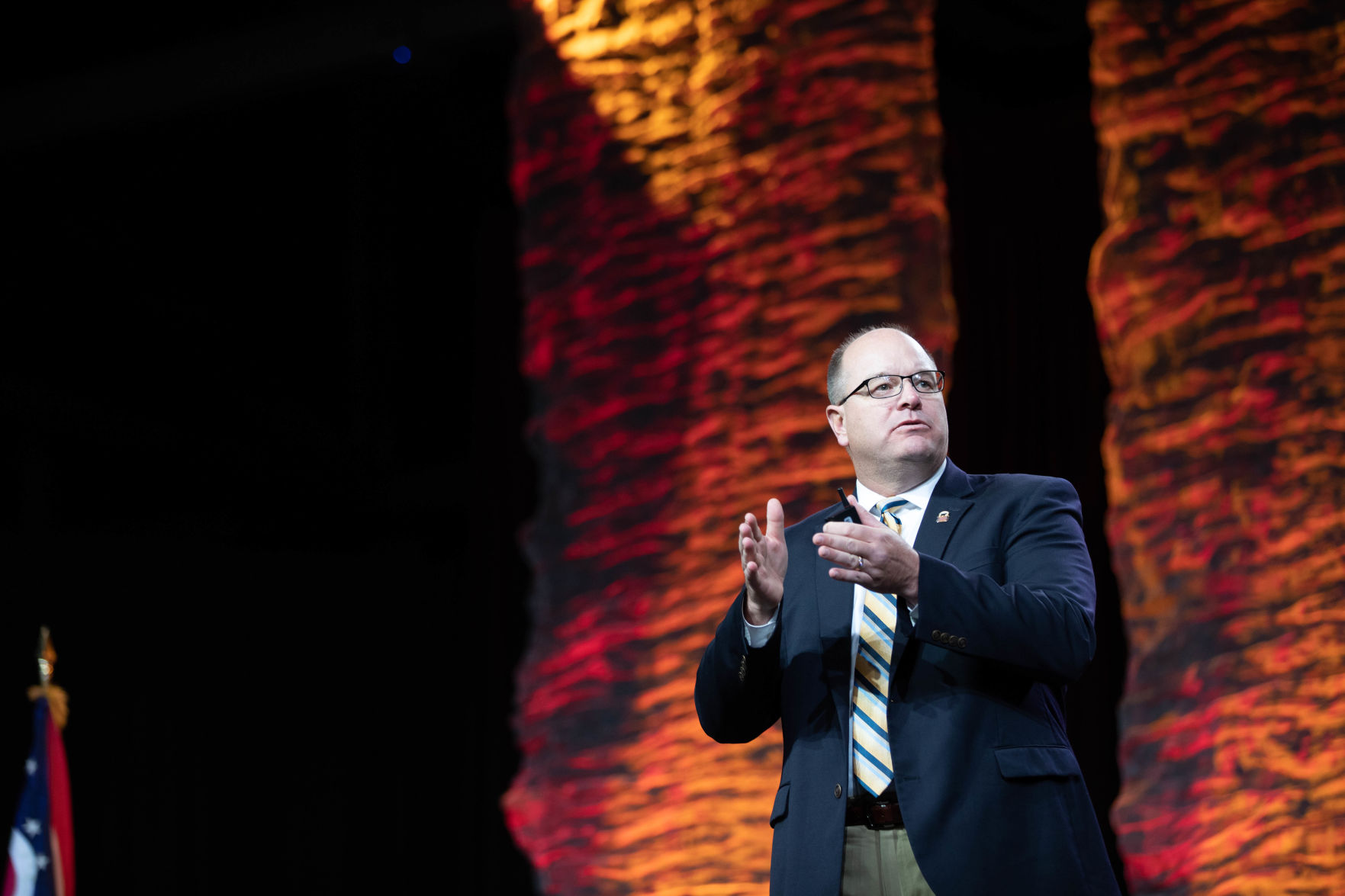It’s a Cinderella story that never seems to grow old. An Ohio Angus breeder went out to eat and ordered an Angus steak that turned out terrible. The experience sparked an idea for a certified brand of beef that would be enjoyed 40 years later, in the U.S. and 50 other countries around the world.
The story was recounted from the main stage at the National Angus Convention and Trade Show, in Columbus, Ohio, last month. John Stika, Certified Angus Beef LLC president, also told of challenges overcome to achieve a 2018 sales record of 1.212 billion pounds sold.
“Just like rungs on a ladder, this brand continues to build on itself,” he told the crowd.
Focusing on the last decade of the brand, he reminded breeders that while the graphs for demand and sales move up and to the right, the growth happened during challenging years on the ranch. Drought, an economic crash and tight cattle supplies presented enormous hurdles, but the brand’s numbers consistently got better.
“It speaks directly to your willingness and ability as Angus breeders to supply the demand that is out there for premium beef and the Certified Angus Beef brand around the world,” he said.
Records can’t be set without an increasing supply of qualified cattle. Accomplishing the 2018 CAB sales required 5.18 million carcasses, a 14 percent increase over 2017.
“If you look back 10 to 12 years, you see during that period we were qualifying about 2 million cattle per year,” he said. “Today we’re certifying 100,000 head each week.”
In 2008, CAB represented less than 10 percent of the fed cattle inventory. That same year, USDA Select accounted for one-third of all fed cattle harvested. Ten years later the brand accounts for 18.5 percent of the nation’s fed cattle while Select has declined to 17.5 percent.
The shift translates to added value for beef producers. Packers pay producers $1.4 million per week in premiums for cattle that meet the brand’s 10 science-based specifications representing one of the best marketing incentives available.
Driving dollars back to the ranch wasn’t always this easy—or this profitable. It took nine years from the date the brand began before the the first premium was realized. The 20-year total for CAB grid premiums is about $700 million, more than half of which has been paid in the last seven years.
“We’ve aligned our business more closely to the needs of consumers,” he said. “Along the way, we’ve created a more sustainable future for all of us,” Stika shared.
Looking to the future, he said continued success hinges on the brand’s ability to build on consumer trust. Initiatives on the horizon include elevating the relevance of brand resources and services for both producers and end users and enhancing the brand experience for consumers.
“What’s exciting is that I don’t believe this brand has arrived,” Stika said, casting the vision for what’s on the horizon for CAB. “We’ve just reached a 40-year milestone. There is more to capture, more to accomplish, more demand to build and more pull-through dollars to feed back into production agriculture.”



